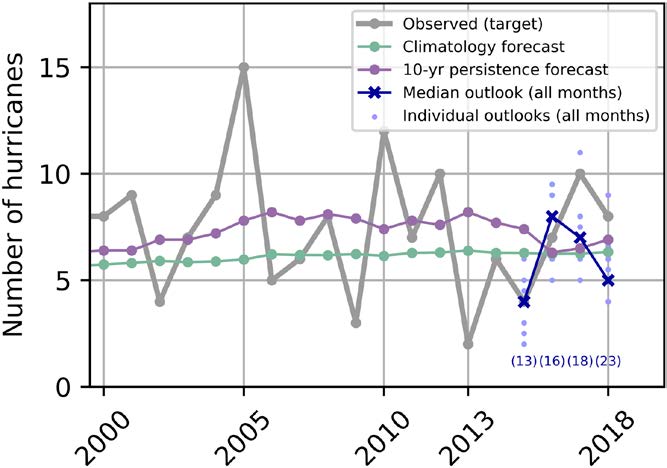Klotzbach, P. J., A. Santra, H. H. Hendon, M. M. Bell, C. Lucas, A. G. Marshall, E. C. J. Oliver, : On the Emerging Relationship between the Stratospheric Quasi-Biennial Oscillation and the Madden-Julian Oscillation. Scientific Reports, 9, 2981 , https://doi.org/10.1038/s41598-019-40034-6
Key Points
Abstract
A strong relationship between the quasi-biennial oscillation (QBO) of equatorial stratospheric winds and the amplitude of the Madden-Julian oscillation (MJO) during the boreal winter has recently been uncovered using observational data from the mid-1970s to the present. When the QBO is in its easterly phase in the lower stratosphere, it favors stronger MJO activity during boreal winter, while the MJO tends to be weaker during the westerly phase of the QBO. Here we show using reconstructed indices of the MJO and QBO back to 1905 that the relationship between enhanced boreal winter MJO activity and the easterly phase of the QBO has only emerged since the early 1980s. The emergence of this relationship coincides with the recent cooling trend in the equatorial lower stratosphere and the warming trend in the equatorial upper troposphere, which appears to have sensitized MJO convective activity to QBO-induced changes in static stability near the tropopause. Climate change is thus suggested to have played a role in promoting coupling between the MJO and the QBO.
Key Figure
FIG. 2. 30-year running correlation between DJF-averaged MJO amplitude and the QBO index. Correlation values are shown using the Wheeler-Hendon MJO index (red line), the JRA-55 MJO index (blue line) and the long-term reconstructed MJO (OT) index (thick black solid line) with the ordinate on the x-axis given by the central year of the 30-year running window. Maximum and minimum 30-year running correlations for the reconstructed index are also displayed (thin black solid lines), calculated from the 56 members of the long-term MJO index ensemble. The dashed line represents the 5% statistical significance level.
Acknowledgments
P.K. acknowledges support from the G. Unger Vetlesen Foundation. M.B. and P.K. were supported by Office of Naval Research Award N000141613033. S.A. would like to acknowledge support from the Rural Research and Development for Profit Program of the Department of Agriculture and Water Resources of the Australian Government. E.O. was supported by the National Sciences and Engineering Council of Canada (NSERC) Discovery Grant RGPIN-2018-05255. The reconstructed MJO index was obtained from E.O.’s website: https://ecjoliver.weebly.com/mjo-reconstruction.html.
